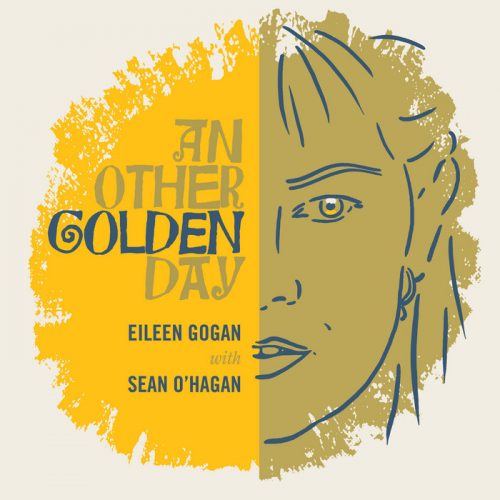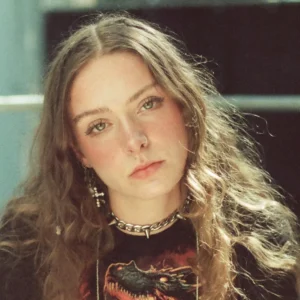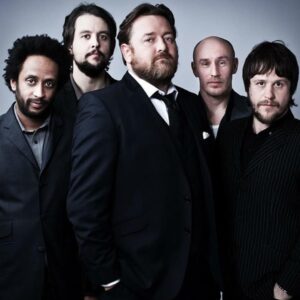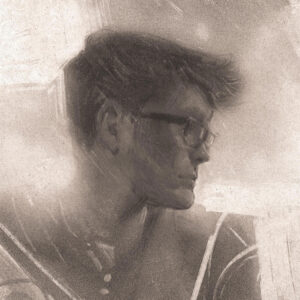When a singer-songwriter starts folding complex arrangements into their music, there’s always the risk of the music becoming too neat or too fussy: a Ferrero Rocher that’s all wrapper and no chocolate. Eileen Gogan’s collaborations with Sean O’Hagan avoid that pitfall, largely because, well, she’s Eileen Gogan and he’s Sean O’Hagan. Gogan has become a mainstay of the Dublin music scene, where her thoughtful songwriting and easy, free-flowing melodies bring to mind Joni Mitchell. O’Hagan, meanwhile, is one of the indie world’s finest and most creative arrangers, enriching the music of Microdisney and Stereolab as well as recording sun-dappled music of his own as The High Llamas.
Together, these two Anglo-Irish artists have released an EP called Another Golden Day, and it’s as warm and satisfying as you can imagine. The standout track is “Wave,” a song that shows both Gogan and O’Hagan at their best. Gogan serves as a grounding presence, her voice as sweet and smoky as a cup of good lapsang tea; she sounds at peace, but not like she’s making a show of it. When she invites the wave to carry her, it feels less like she’s giving up control and more like she’s simply allowing herself to drift.
O’Hagan, meanwhile, is as deft and imaginative as ever. When Gogan draws out the word “wave,” he stacks her vocals on top of each other as though they’re harmonizing even though they’re all singing the same note, lending an air of psychedelia. A bossa nova strum and a twangy, rolling guitar meld together in the background of the verses, accentuated by a chirping, burbling synth pattern. Best of all is the chorus, which lets Gogan’s vocals hang suspended in the air beneath a cloud of bright, pulsing strings before “Wave” continues on its way, glowing with the easy sweetness of another golden day.
One thing that really stands out about this song is the vocal melodies: they sometimes stack like harmonies, but they all sing the same note, and it has a really cool effect. Did that have any particular inspiration?
Eileen Gogan: That’s an interesting observation. That is actually Sean’s doing! The way the whole project happened was, I recorded the songs with just a vocal and three chords picked on the guitar. I sent the guitar and vocal as separate wav files to Sean and he did everything else! I think the only song my guitar survived on is “Wheels.”
So I had no input into the arrangements. I just handed over the songs in a very stripped down way and it was like magic listening to what Sean would send back. For me it was like stepping onto another planet musically. It is astounding how different the songs sound now.
What’s your normal lyric-writing process? Did you approach “Wave” in the same way, or do something different?
EG: I don’t really have a process for writing lyrics. With me it’s usually the melody that happens first. It visits between sleep and waking. I can hear a melody in my sleep and it’s great when it hangs around for a while and gives me time to surface into waking so I either sing it into a recorder I have by the bed, or if it’s been there longer I’m more confident to run and get a guitar and work it out and then record it immediately. It’s one of my favourite states, that one between sleep and wakefulness.
I did practice lucid dreaming for quite a while which has paid off, you can sometimes prolong the state and guide what you want to happen. I often lie in bed looking out the window in that state, the most wonderful images and sounds come into my head. I recently read Beeswing by Richard Thompson (an autobiography) and he said he loves staring out a window too. So to answer your original question I usually just try to find words that fit the melody. I guess I try to steer clear of clichés but they have their place, if they fit a melody well, they can sound good too.
I’ve always loved the Joni Mitchell-y elements of your work–there’s something about the way everything feels so natural and unforced in your music. What’s your favorite Joni album?
EG: Oh my God! Thank you so much for the weighty praise, Joni is incredible. I actually don’t know all of her albums, I have yet to listen to Hejira and Court and Spark. I’m saving them up. The two albums I really love at the moment are The Hissing of Summer Lawns and Don Juan’s Reckless Daughter. There is a beautiful open and cinematic quality to those two albums. The vocals twist at the end of notes like a seasoned jazz horn player, like Ben Webster or Lester Young.
I think Joni did something very unusual with the traditional song structure, the melodies and hooks are there on these albums but they frequently come apart and drift back together. Blue is a beautiful and brilliant album start to finish, but I think the unorthodox song structures and tunings of Hissing and Don Juan for me give them a more interesting listening experience.
This one’s for Sean: your arrangements are always gorgeously detailed, but this one pulls the trick of sounding both pared-back and very rich all at once–it reminded me of “Bach Ze” from Snowbug a bit. As an arranger, how do you find that golden balance where it’s neither too much nor too little?
Sean O’Hagan: The rule is to find space. Listen to the vocal and create space around the vocal to set the melody or dress the melody. Feature an idea or sound sparingly and take it away while the listener might want more. Never pile it up. Too much content at one point creates boredom, not intrigue.
Do you have any plans for the coming year?
EG: I am working on another album which Sean has heavily influenced by instructing me not to have any drums on it. This is such good advice, as it has slightly changed the writing and approach to arrangements. I have a gig booked for March in Dublin which I’m really looking forward to. I missed gigging the last two years. I find it a great way to work out new songs. I hope to get more gigs done this year.







